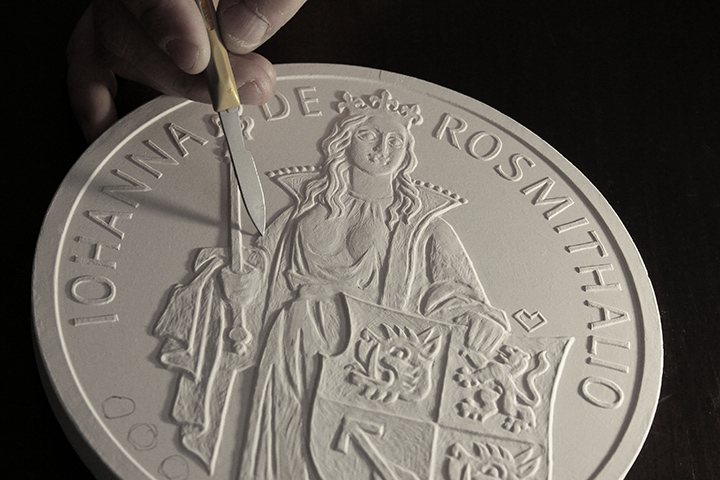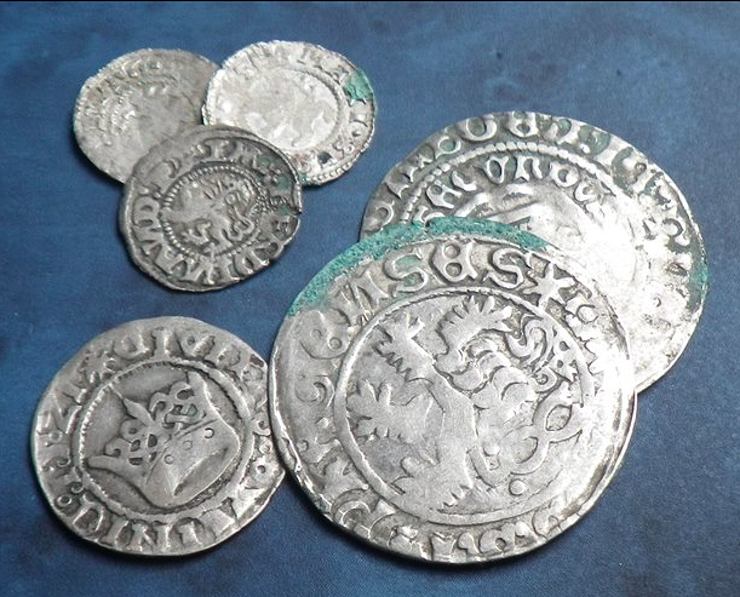Top News To Gold Blanks Czechoslovakia Medals
Wiki Article
What Can A Model Made Of Plaster Be Used To Create A Physical Representation To The Gold Coin?
A gold coin or medal design can be used as a design reference by the designer or artist. The design may be drawn by hand or a digital representation that is created with graphic design software.Choosing a Medium- Plaster is a common material used to create maquettes due to its flexibility and ease of sculpting. Other materials like wax and clay could be utilized.
Plaster Mixing - Plaster and water mix to create a smooth consistency. The mixture must be smooth and free of lumps to create a good mold.
Base Creation- In order to sculpt the maquette, a base or platform must be built. This base can be a wooden plank or an even surface for stability.
The artist will start by creating a maquette of the gold-colored design. The plaster is then shaped to form a relief or three-dimensional representation of the medal or coin.
Detailing and Refinement - The artist concentrates on adding more details, refining the contours, and making sure that the design is accurate in dimensions and characteristics of the artwork. This phase requires accuracy and focus.
The time needed for drying and setting After the sculpting has been completed, the plaster must be allowed to dry and settle. This is to allow the maquette to harden and holding its shape.
After drying the maquette it's finished and smoothed to eliminate any imperfections, bumps or rough spots.
Preservation and Sealing- To protect the maquette for future processes such as scanning or molding, it could be coated with an adhesive.
The resulting plaster maquette serves as a tangible, 3D representation of the gold medal or coin design. It is used in a number of stages in the manufacturing process, including scanning for digital reproduction, or creating molds for large-scale production. Artists can also make use of it to see and tweak the design. Follow the best Prague Mint gold coins plaster molds website recommendations. including buy gold coins, gold buffalo, 100 grams gold biscuit, gold bullion bar price, 1 ounce gold, gold coin prices, gold krugerrand, purchasing silver bars, $20 gold piece, order gold coins and more.

Why Do Dies Used To Strike Gold Medals Or Coins Undergo Vacuum Hardening Processes?
The vacuum hardening of dies used to strike gold coins and medals is done by subjecting them to extreme temperatures in controlled conditions in a vacuum chamber. This article provides an overview of vacuum hardening for dies.
To create dies to be used to make the coins or medals, they must be clean and free of any contaminants or residues.
Moving into the vacuum furnace
The dies will be put inside a chamber of vacuum, which is a specialized heat-treatment room that can create vacuum.
Evacuation from the Air
The vacuum furnace eliminates air from the chamber, creating the perfect vacuum, free of oxygen or other gases. This prevents oxidation while ensuring the same heating.
Heating Phase
The furnace is heated up to the temperature to allow for the hardening of the dies. The temperature range is based on the material used and the hardening process.
Soaking in High Temperatures
Die dies are kept at an elevated temperature for the exact duration necessary to ensure that the material attains and keeps the desired level of hardness.
Quenching and Cooling
Following the soaking process, the dies are rapidly cool or quenched with specialized methods. The rapid cooling process helps to lock the desired hardness into the metal.
Tempering (Optional).
In certain cases the process of tempering may occur after the process of hardening. Tempering involves heating dies at a low temperature in order to release internal tensions and improve the toughness.
Quality Control and Inspection
Die dies that are hardened undergo strict quality inspections and checks in order to meet the standards for strength, hardness and dimensional tolerances.
Post-Treatment Handling-
After the process of vacuum hardening is completed The dies can undergo additional processes such as polishing or coating before being used in the coin or medal striking process.
The process of hardening by vacuum improves the durability of the dies, their wear resistance and the life of the dies used to create gold coins or gold medals. The process of hardening by vacuum is a reliable and predictable method to harden dies in a controlled, safe environment free of contaminants. View the top vacuum hardening Czechoslovakia gold coins blog examples including sell gold silver near me, gold eagle coin, maple leaf gold coin, 1 10 oz american gold eagle, gold coin shops near me, medal gold medal, silver double eagle coin, bullion gold bars for sale, gold and silver shops near me, 1oz of gold and more.

Why Do Dies Need To Be Polished By Hand? Ensure That Gold Medals And Coins Have A Perfect Surface?
The process of hand polishing dies is necessary for the production of gold medals and coins. This is due to the fact that it enables better reproduction of fine detail. Smooth surfaces allow the details of the design to reproduce more precisely on the die-cast metals and coins.
Better quality of medals or coins- A polished dash ensures that the coins or medals have sharp, sharp edges as well as relief. This enhances the overall appearance and quality of the final product.
Reduced Wear and Tear Polishing reduces friction and wear in the striking process. A smooth die's surface minimizes the chance of imperfections or irregularities on the medals or coins struck caused by rough surfaces on the die.
Consistency in Striking Hand-polished dies offer a consistent striking surface, which ensures uniformity throughout the minting process. To ensure that the design is maintained in its accuracy as well as its depth and overall quality, consistency is essential.
Die longevity- Die that are well-polished will be less susceptible to wear or injury during the striking process. They're more durable and durability, allowing for a higher number of strikes, without damaging the quality of minted products.
Precision and Accuracy. Hand polishing lets engravers precisely fine-tune, refine and even perfect specific areas on the die. The details will be accurately reproduced on the struck coin or medal. The level of precision adds to the accuracy of the final product.
Quality Control: Polishing is an important part of quality control. The inspection of the die when hand polishing can be a method to find and fix any imperfections or defects prior to the striking process.
Surface Finishing - Polishing may add specific surfaces or textures to the struck medals and coins, improving their visual appeal.
Hand polishing the dies of gold coins and medals with care is an important process to ensure that the minted product is of high-quality, accurate, and pleasing to the eye. It's crucial for the appearance, uniformity and long-lasting quality of the final product. See the recommended hand polishing Prague Mint gold coins website tips. including 20 dollar coin, gold and silver buyers near me, gold dollar coin 2000, gold bullion gold, 1972 gold dollar, $50 gold piece, 1 oz gold eagle, american eagle gold coin, sell gold silver near me, george washington gold dollar coin and more.
Why And How Are Limited Edition Gold Coins Or Collectible Gold Coins Individually Identified?
This article explains the method and reason the reasons for this method of numbering. The how and the reason of this numbering.
Sequential Numbering: Each coin in a limited-edition or collectibles series has the same, often an engraved number. The number signifies the specific place in the collection.
Certificate of authenticity. The coin will be presented with a proof of authenticity, which is a match to the coin’s unique number. The certificate confirms that the coin is genuine. It also provides information about the coin's series, the metal content, and the minting.
There are numerous reasons to number each coin individually
Authenticity Assurance – The numbering of every coin within the series is a visible and verifiable method of confirming its authenticity. Each number acts like an unique identifier, and is a guarantee that the coin is genuine.
Exclusion and rarity The coins that have limited issue with specific numbers are regarded as more exclusive and scarce. Numerous coins are sought after by collectors due their limited availability. This increases their value.
Numbered Coins Add Collectible Appearance- They add collectible appeal because they allow collectors to track and highlight particular numbers in the series. The numbers that are less or more significant in a sequence may be considered to be more desirable or valuable.
Individual Numbering encourages Collector Engagement and interest in completing sets or acquiring Specific Numbers. Collectors may seek out specific numbers in response to personal preferences or significant milestones.
Potential for resale and value Coins with unique serial numbers could be more valuable on secondary markets, especially when their serial numbers are lower or belong to a highly sought-after collection. These coins are highly sought-after by collectors due to their rarity and uniqueness.
The ability to track and document a coin's history - Numerical coding helps in the tracking and documentation of the history of a coin helping to prove its provenance and confirming it on the market for collectors.
The issuers and mints are able to establish authenticity by numbering the limited-edition gold coins. They also create exclusivity. This increases the appeal of collectors who are looking for unique, valuable, or valuable pieces from a particular series. Numismatics value these coins for their unique significance. View the most popular Czechoslovakia gold coin numbering more advice including 2000 sacagawea, $50 gold coin, gold dollar coin, canadian gold maple leaf, apmex gold, gold medal gymnasts, gold coins for sale, gold eagle, 2000 olympic, gold coin values and more.
